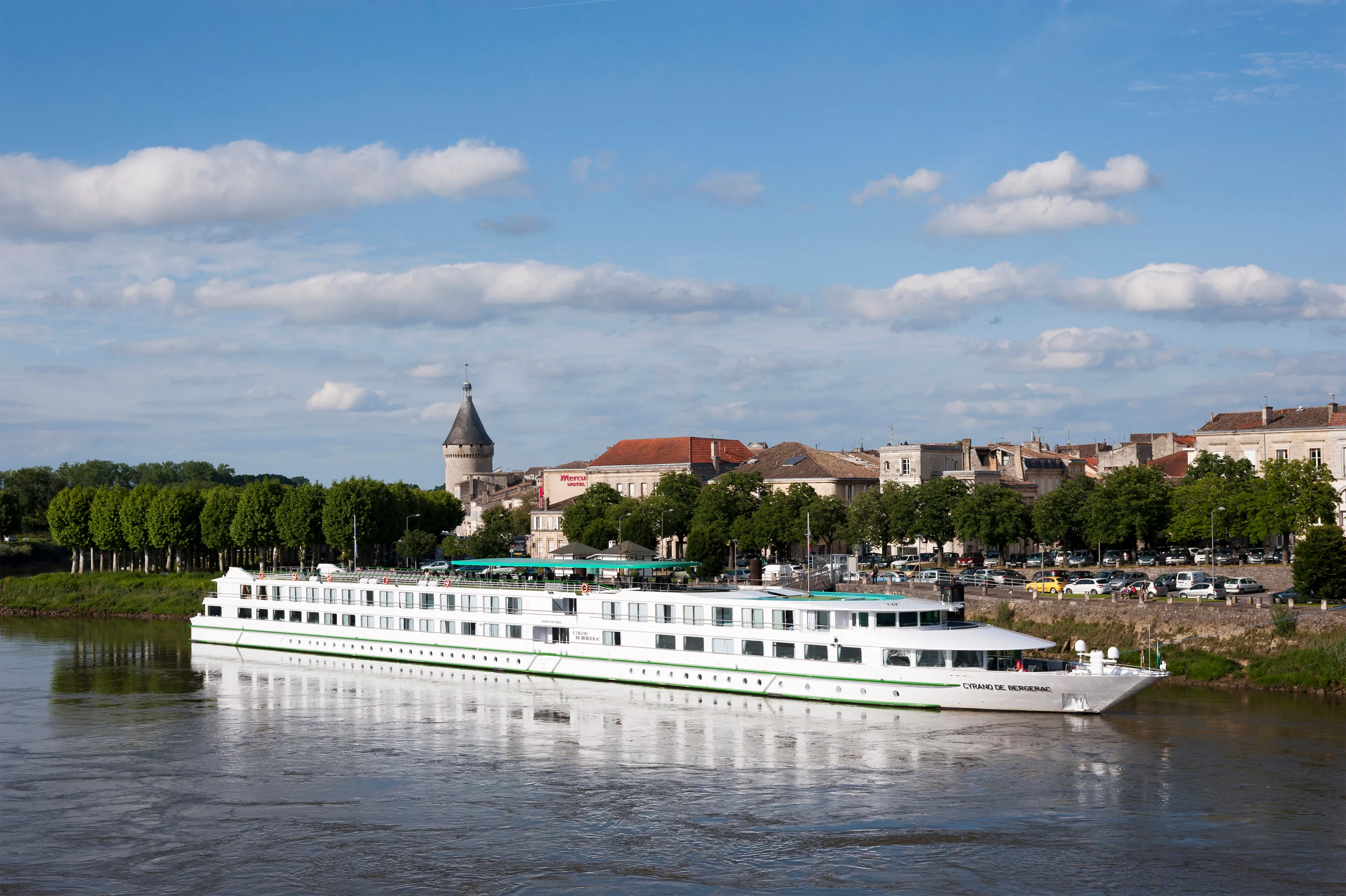
In the southwest of France, the estuary of the Gironde, born from the meeting of the Garonne and the Dordogne, is an open door to the city of Bordeaux whose name evokes the wine worldwide in all its nobility: Blaye, Pauillac, Saint-Estèphe, Médoc ... represent some of the jewels of the Bordeaux vineyards.
75 kilometres long, it houses forty ports, located in the old marshes of the Gironde, dedicated mainly to boating and fishing. Islands populate it, from Bec d'Ambès at its mouth. One of the largest, covered with 14 hectares of vineyards, is called Margaux!
We pass-by the "barge", a traditional boat that allows the transport of goods and the "filadière", a traditional fishing boat from this region. However one can also see larger ships of up to 280 meters long in the "port of the Moon", the largest port of Bordeaux.
The navigation of the Gironde began in the Bronze Age with the trade of tin from Cornwall and the trade of copper brought from Spain. This traffic allowed the emergence and the foundation of Burdigala, the future city of Bordeaux, current capital town of the Aquitaine Region.
In the 9th century, the Vikings crisscrossed the coveted waters of the estuary and plundered the merchant ships. However the maritime traffic was amplified with the arrival to the throne, of the kings of England in the twelfth century. In 1152, Henry II Plantagenet married Eleanor of Aquitaine and collected the lands of Bordeaux as a dowry. The estuary became the gateway to the King of England and the wine trade exploded.


Thanks to our CroisiEurope wine cruises, wine and gastronomy enthusiasts will take a close interest in the meandering Dordogne and Garonne, which naturally define the great terroirs of Bordeaux. The influence of the rivers, the amplitude of the tides and the prevailing ocean climate, created a favourable environment for the development of the grapes and determined the different viticultural areas of Bordeaux. The wide variety of soils explain the difference in style of the appellations of Bordeaux wines: Médoc, Entre-deux-Mers, Premières Côtes, Côtes de Bourg and Sauternes. Many of them are cultivated in castles built in the Middle Ages on the border of English and French territories.
Red or white, dry white or sweet, wine is the wealth of this region since the Romans. Isn’t wine the "gold" of the Garonne since antiquity?
From the fourteenth century, Bordeaux became a centre for processing and shipping cod to the rest of Europe. The Dutch followed the English. They settled in Bordeaux, marking the beginning of ship-building.
In the 18th century, the Cordouan lighthouse was built to help boats pass the dangerous Gironde mouth. However, another danger lurks in this region: the wine trade attracts looters! Louis XIV authorized the arming of boats. Privateers then came to the rescue. They invaded the estuary to secure and protect maritime commerce. Bordeaux thus became the first French port.
Vauban, general commissioner of the fortifications of King Louis XIV, built a citadel at Blaye in the second half of the 17th century to protect the estuary from the threat of the English and Dutch fleets. This fort is unable to control the other bank of the Gironde, so he built Fort Medoc on the left bank and Fort Paté on an island in the middle of the Gironde.
This "Vauban lock" was classified in 2008 as a UNESCO World Heritage Site.
Bordeaux, was the second largest slave port in France, and was enriched by the commercial activities that flooded its quays with countless warehouses. The fortune of the Bordeaux merchants has remained engraved in the ornaments of the old buildings which today arouse admiration on the architectural level. The Place de la Bourse and the Grand Theatre are worth a visit.
It has been ten years since the immense hangars of the Port Autonome gave way to remarkable developments along the quays of the Garonne River covering nearly four kilometres. The river front as well as the monuments built in the course of its history, have earned the city of Bordeaux listing as a World Heritage by UNESCO in 2007.


The waters of the Gironde estuary cultivate another wealth that echoes the treasure of wine: fishing.
It is home to, among other things, ghost shrimps and sturgeons: the only natural species found in Western Europe. Today it is protected because of the danger of extinction, it produced up to 5 tons of caviar per year in the 1950s.
Glass eel fishing constitutes today its most lucrative activity. These eels are extremely popular in Asian markets since the 1980s.
The estuary, staked on both banks with small wooden constructions on stilts for plaice fishing, is also the haven of migratory birds, grey herons, cormorants, black-headed gulls ...
The touristic walk along the estuary is a promise of a multifaceted change of scenery.
Tourism in Gironde offers a great diversity of landscapes, between the right bank and left bank of the river. The left bank is dominated by the vineyard landscape in an alluvial plain. Near the sea, the vines give way to the dunes and swamps. On the right bank, large cliffs and hills create a contrast with the vines on the other bank. Further north are the large swamps. Finally, visit the unusual troglodytic dwellings from north to south set into the cliffs.
Living by the rhythm of the tides that go up to 150 kilometres from its sea, the Gironde estuary cultivates its natural wealth with serenity and dynamism.